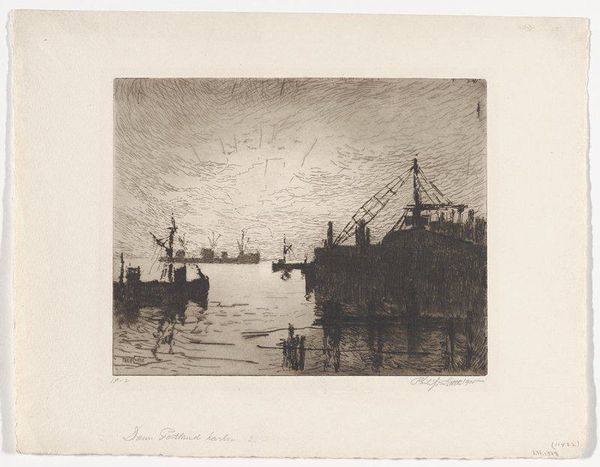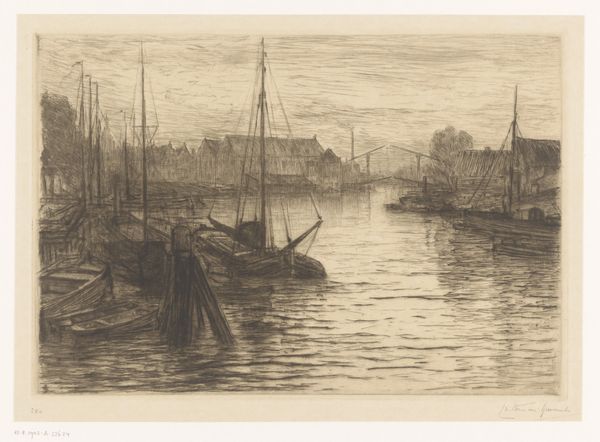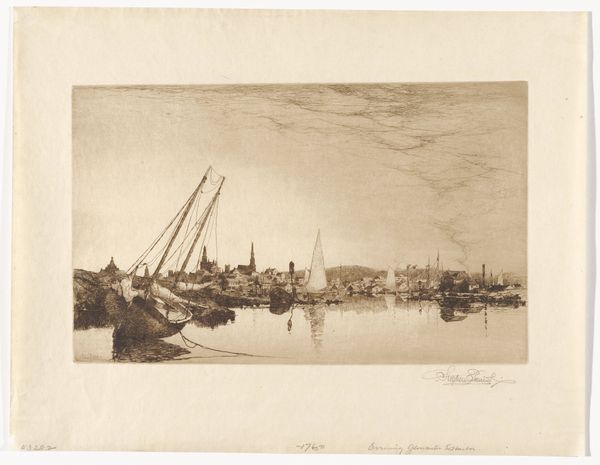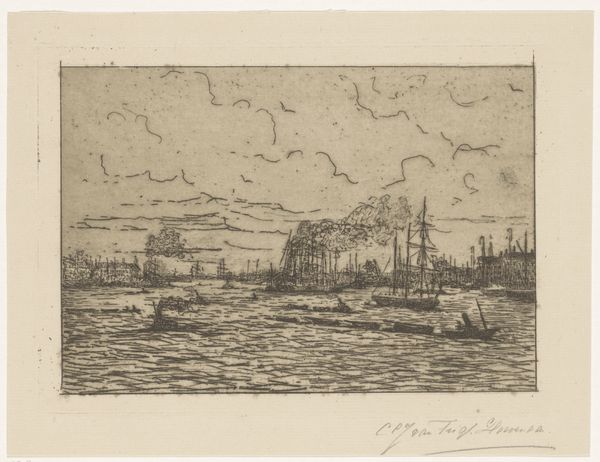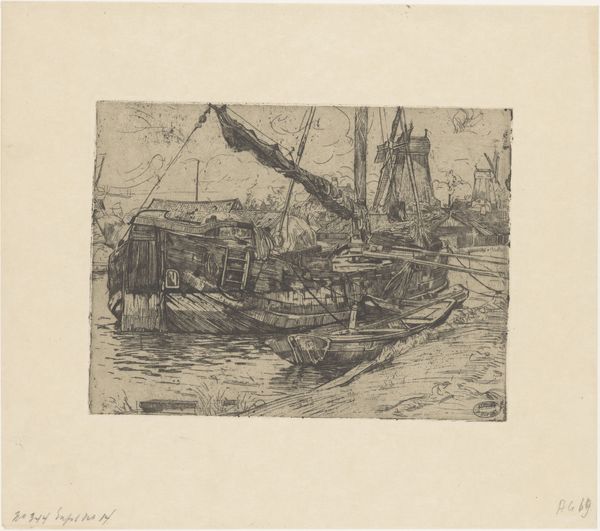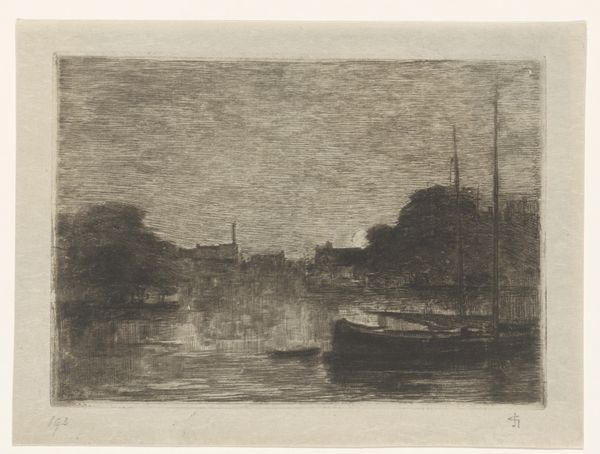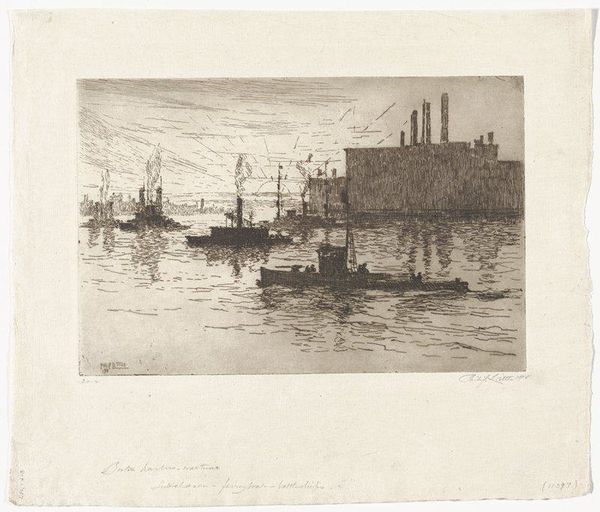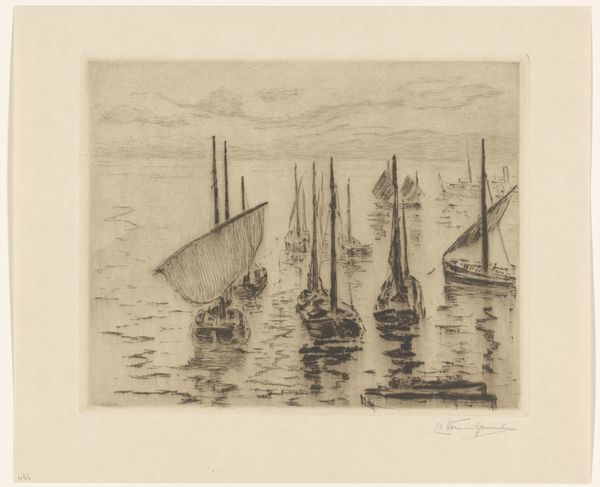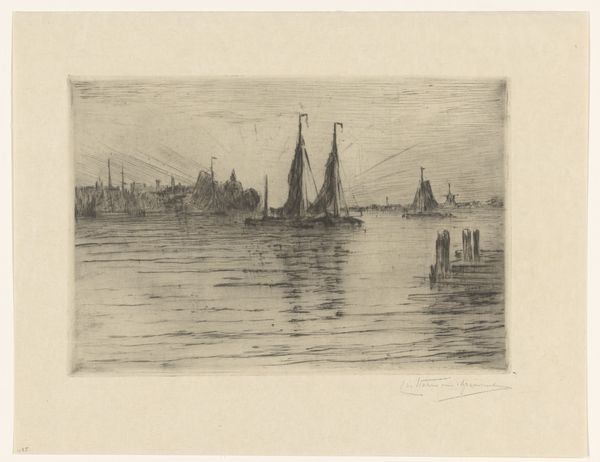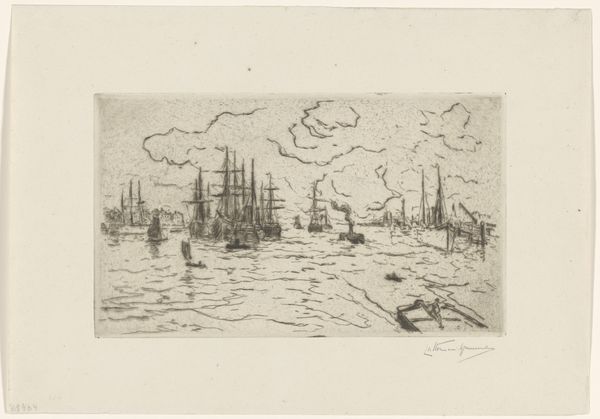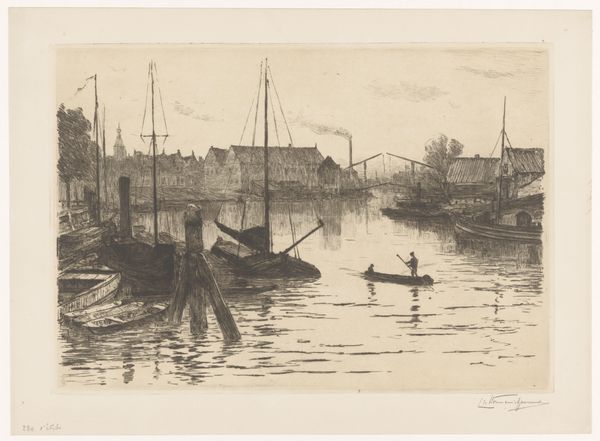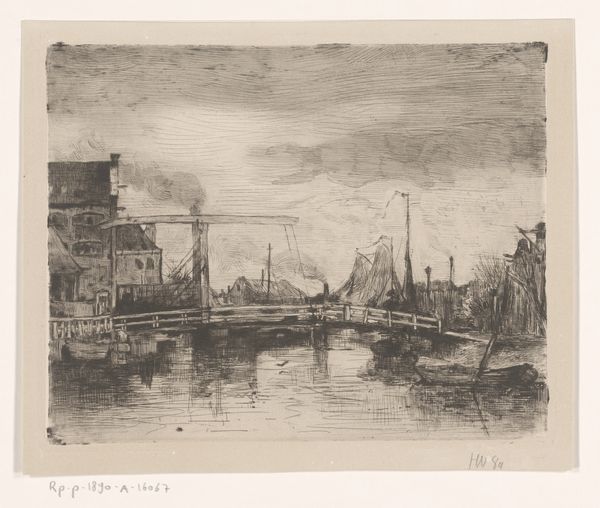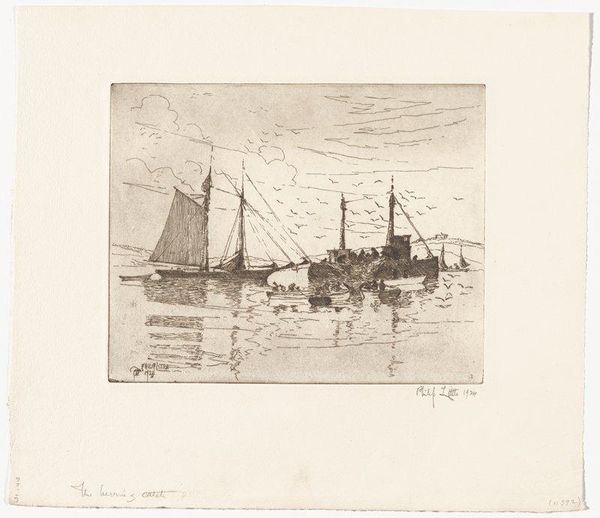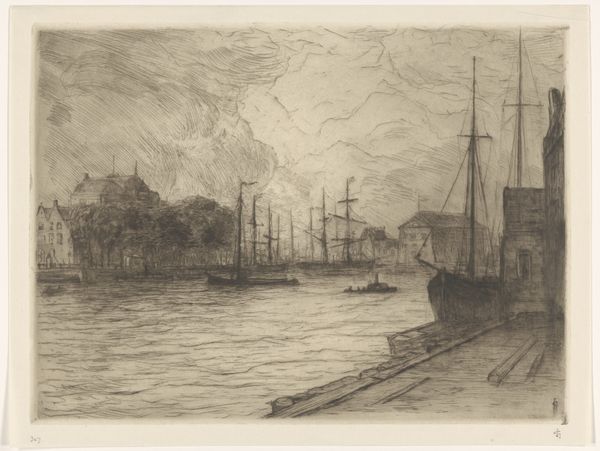
drawing, print, etching, paper
#
drawing
# print
#
etching
#
landscape
#
paper
#
orientalism
#
cityscape
#
realism
Dimensions: 105 × 150 mm (image); 117 × 157 mm (plate); 172 × 207 mm (sheet)
Copyright: Public Domain
Editor: Here we have Maxime Lalanne's "Port of Bordeaux," an etching from 1869, currently residing at the Art Institute of Chicago. I’m struck by how bustling yet muted it feels. It’s like capturing a fleeting moment of industry. What catches your eye about it? Curator: Immediately, I consider the historical context. The late 19th century saw immense growth in port cities due to increasing global trade. Bordeaux was a crucial hub. How does Lalanne's portrayal reflect, or perhaps challenge, the romanticism often associated with industrial progress? Consider the composition – the density of masts, the suggestion, but not the explicit depiction, of the people working there. Is it celebrating progress, or subtly critiquing its human cost? Editor: That's a fascinating perspective! I hadn’t considered the potential critique. I guess I saw it more as a straightforward representation of reality. How might this image have been received by the public back then? Curator: Good question! Prints like this circulated widely, shaping public perception. Was Lalanne commissioned, or was this his own artistic statement? Either way, consider who the likely viewers were: the burgeoning middle class, perhaps, eager to see representations of France's economic might. And what would those viewers know or feel about industrial development? Editor: It's like the image exists in conversation with the societal values of the time. The lack of idealization feels almost journalistic. I appreciate how you’ve highlighted the social implications of its style and subject. Curator: Exactly! By examining the relationship between art and society, we uncover narratives that enrich our understanding of history itself. Lalanne doesn’t just depict a port; he gives us insight into a specific historical, social, and political moment. Editor: Thanks. I learned a lot about reading an image by considering its impact at the time and place of creation. Curator: Likewise. It’s a valuable exercise to think about art as more than just an aesthetic object.
Comments
No comments
Be the first to comment and join the conversation on the ultimate creative platform.
